It’s not yet noon and I’m sipping on a dram of Deanston Virgin Oak in my office. A small yet annoyingly loud part of my brain is busy chastising me for the indulgence, but it fades away behind a wall of lemon, barley sugar, and green apple as I nose the dram. The aromas work their time-traveling magic and I’m back in Doune on that sunny early May day with my dad after a gorgeous drive from Pitlochry.
Deanston may not be in the collection of distilleries that spring to mind when someone mentions single malt Scotch, but if my rambles across Scotland’s highlands and glens have taught me anything it’s that many of the best things in life are those you’re allowed to discover for yourself. I became familiar with Deanston after visiting Bunnahabhain distillery on Islay and Tobermory distillery on Mull – sister distilleries of Deanston all owned by Burn Stewart Distillers. I knew I’d have to complete the Burn Stewart trifecta one day; little did I know the opportunity would present itself so soon. I had no expectations for Deanston and had only the shallowest knowledge of their products when we arrived to the ex-cotton mill on the River Teith after a few wrong turns (the signage is supposed to improve).
Upon our arrival, we were met by Peter Semple, an incredibly friendly and warm northern Irishman new to Deanston but not whisky. He spent much of his youth growing up in this very area just northwest of Stirling, in Scotland’s central belt, and the fact he chose to return to the area to work for Deanston spoke volumes for what he thought of the beautiful region. The buildings in which the distillery now operates began life as a cotton mill in the late 18th century. Peter walked us along the River Teith, the soft waters of which flow over granite and peat beds, up to the old mill workers’ town where some 1,200 people used to live. The mill eventually ceased operation in 1965, and less than a year later it began a new lease on life as a distillery. The pure water of the Teith was perfect for producing whisky, and the power of the river provided the distillery (and the national energy grid) with its own hydro-electric power. Deanston may be the most eco-friendly, green distillery in all of Scotland.
We walked back to the distillery and stopped in the loading yard where a couple of burly guys unloaded casks from the back of a truck. They’d set up a series of foam squares to cushion the barrels as they rolled out the back of the truck. Deanston uses ex-Bourbon barrels almost exclusively, though they have some Sherry butts and virgin oak barrels to put interesting spins on whiskies in their final days. Nearby, a couple of massive black tankers held newmake spirit that would find its way to other blenders around Scotland.
Before checking out the never-say-die Porteus mill, Peter took us through the turbine room where the hydro-electricity is generated by the River Teith flowing through the distilleries man-made lade. The huge building was filled with the clangor of the turbines, but they ran so smoothly that a coin could stand on its end on the turbines. In fact, there was a coin doing just that – it’d been there for decades. Seeing these turbines and the Porteus mills you see at every distillery can’t help but make one nostalgic for the craftsmanship from days of yore. All the barley Deanston mills is unpeated; if you pick up peat aromas and flavors in the final product they derive from the slightly peaty water of the Teith.
In the mash house, I got a look at one of the oldest operating mash tuns in Scotland. The open-topped, red, cast iron behemoth was a product of the defunct Alloa foundry, but that didn’t stop Callum Fraser, Deanston’s master distiller with some 20+ years in the industry, from sending the tun’s rake trawling through the distillery’s mashes. Bruichladdich uses a similar old-school mash tun, and Benromach had one in its little museum, but nearly all distilleries use mash tuns with sealed tops.
It’s a real pleasure to meet Callum, who focuses on making whisky using traditional methods. He explains that Deanston uses a three-water process in the mash tun for extracting sugars from the 10.5 tons of malted barley. In total, they use 95,000 liters of water from the Teith for each mash, which takes 3.5 hours from start to finish. The process of mashing barley is complicated and prone to failure if even one thing goes wrong along the way. If the barley is milled too finely, the mash will cake up in the mash tun. If the barley is milled too coarsely, the wash will run through the mash without taking all the sugars. If the temperatures of the different washes are off you can lose sugar, cake up the barley, and ruin the mash. If you don’t let the water sit long enough or if you over-rake the mash, you’ll ruin it. Callum is quick to point out that while stillmen get most of the glory when it comes to making whisky, they wouldn’t have anything to distill if they didn’t have an excellent mashman. Who could have guessed that once upon a time Callum was a mashman?
We followed the wort, or wash, from the mash house into the fermentation area where a series of steel washbacks stood ready to turn that sweet liquid into something resembling a strong beer. And this is where things got crazy. The length of time you allow the wash to ferment dictates some of the flavor and characteristics of the final spirit. Forty hours is about the minimum amount of time required for fermentation, and, in my experience, most distilleries spent somewhere between 40 and 70 hours fermenting their wash. Deanston never dips below an 80-hour fermentation and their average length is 103 hours. It’s an astounding length of time that most distillery managers must scoff at because it bottlenecks production. Not Callum. He tells me that around the 65-hour mark they get a secondary fermentation from wild yeasts in the air that give the spirit a fruity, citrusy quality.
I’m still shaking my head when we pass into the warm stillhouse where hundreds of cotton mills used to clatter away. Two tall wash stills and two tall spirit stills with reflux bulbs and lyne arms with slight inclines boiled away as Peter introduced me to their stillman, Jim. Jim grew up in the Doune area, and he’s been around the distillery for most of his life. All the stills are original except one which had been replaced, and their composition made it clear what type of spirit the founders of Deanston aimed for: a light, quaffable dram. Reflux in stills causes heavy oils and elements in the spirit to fall back into the pot so only the purest alcohol vapors escape the still to condense as newmake spirit. Jim makes all the cuts in the newmake spirit by hand and eye, judging the right time to move from head to heart to tails on his own. It’s at this moment that I realize that Deanston is completely bereft of computers. Traditional indeed.
We escape the heat and make our way to Deanston’s large warehouse with Peter as our guide. The filling store is crowded with barrels ready to be topped off with newmake spirit, and we head through a series of locked doors into what I can only describe as the mecca of aging whisky. If you’re a barrel of whisky, there’s no better place to sleep than in Deanston’s dark, vaulted warehouse that instantly reminded me of a Port lodge. I wasn’t allowed to use devices in this area, but I believe Peter mentioned it used to be used by loom workers when the distillery was a cotton mill. I stood gape-mouthed for some time and tried to soak in the alcohol vapors.
On the way out of the warehouse, Peter mentioned that the distillery isn’t operating at 24-7 production so there’s still room to increase their presence. Lucky for us, the USA is one of Deanston’s primary markets and I’ve recently seen Deanston at local bars in Madison, WI.
We passed through the new visitors center as workmen continued to spruce it up for the summer rush. The truth is they aren’t quite open for distillery visits so, again, I got lucky. The visitors center looks to be a gorgeous space with rustic wood furniture and a handcrafted feel. Visitors will be treated to drams and have the opportunity to nose aromas of things they can look for in the whisky. The reality is that most whisky drinkers need to train their noses to pick up these aromas, and there’s no better way to do it than how Deanston’s going about it.
Peter finally takes us into a little tasting room where he pours us drams of their 12 Year Old and Virgin Oak expressions. We start with the Virgin Oak (46.3% ABV, no color added, un-chill filtered, NAS), which is a perfect amber color, and start nosing. The youthfulness is effervescent on the nose and I pick up white grapes, pears, green apples, and barley sugar. It smells delicious. This whisky spent most of its life in ex-Bourbon barrels before being finished in virgin oak barrels, which should give it an extra blast of vanilla and honey sweetness. A band of that sweetness rolls through the light – almost juicy – whisky on the palate, and it has lingering vanilla and toffee notes.
The Deanston 12 Year Old is a bit sweeter on the nose with lots of honey, musk melon, and something floral behind the honeycombs. It’s a richer, creamier whisky on the palate with that same honey/malty sweetness, a tang of orange or lemon, and a zesty ginger wave. Both whiskies have nice finishes and could easily find a home on my whisky shelf.
What an immensely pleasurable experience. Peter, Callum, Jim, and the cast at Deanston put on one hell of a walkthrough that showcased their realness and dedication to producing handcrafted whisky using traditional methods. Now that the visitors center is open and a full spate of tours are available, there’s no reason to miss this excellent experience in a such a beautiful part of Scotland there on the edge of the Trossachs national park and less than an hour from both Edinburgh and Glasgow.
Disclosure: Deanston provided my dad and me with complimentary tours and bottles of the Deanston Virgin Oak. All thoughts and opinions expressed here are my own, as always.

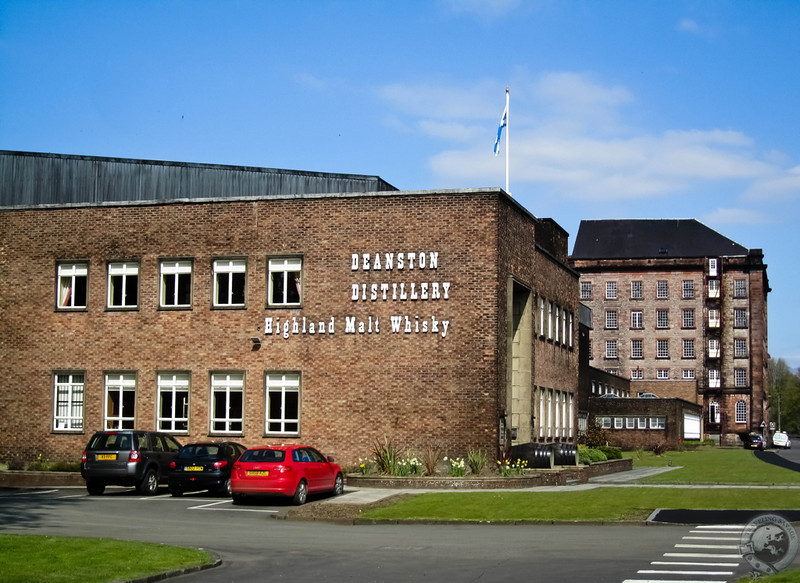
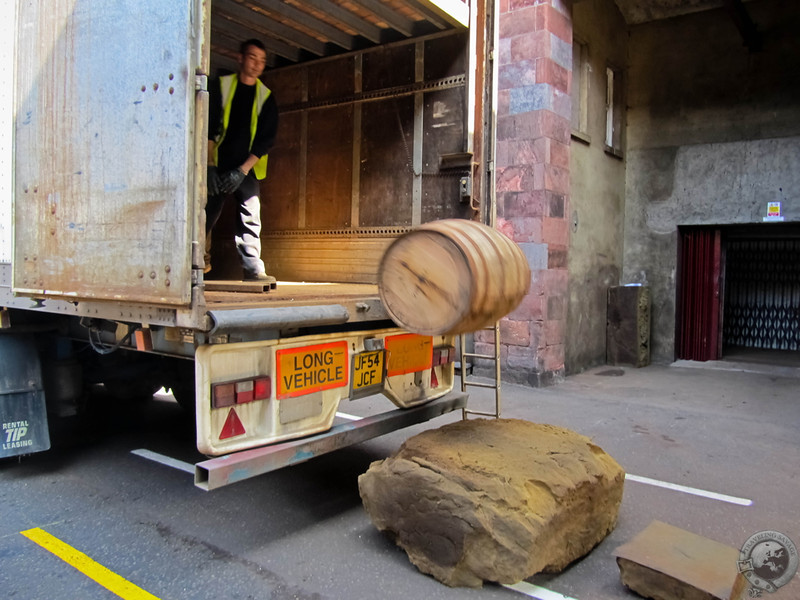
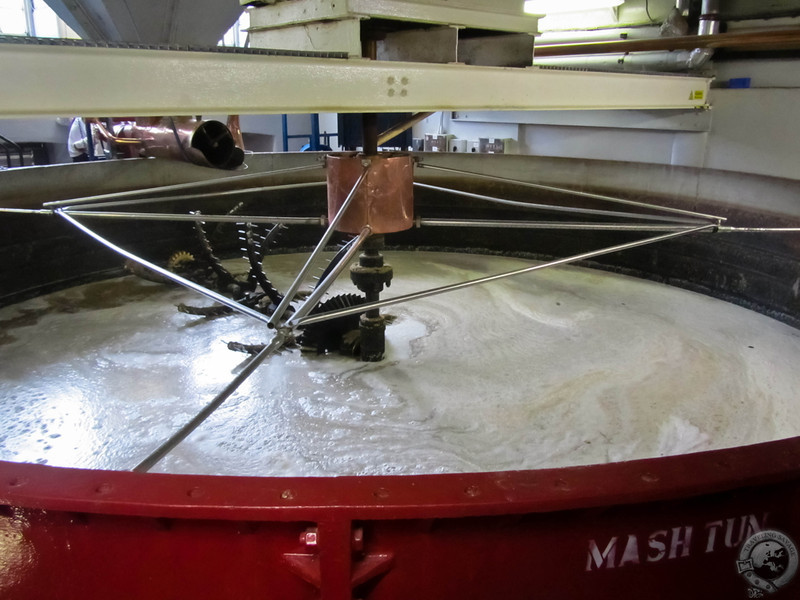
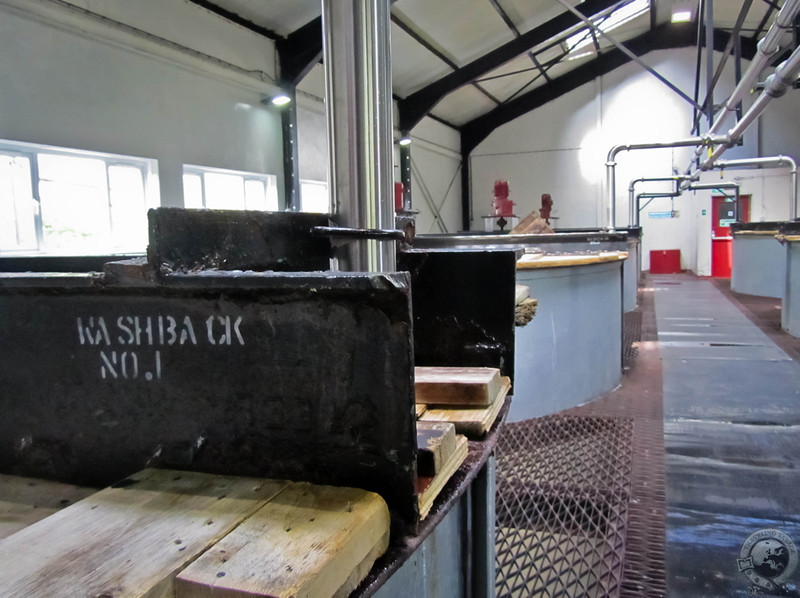
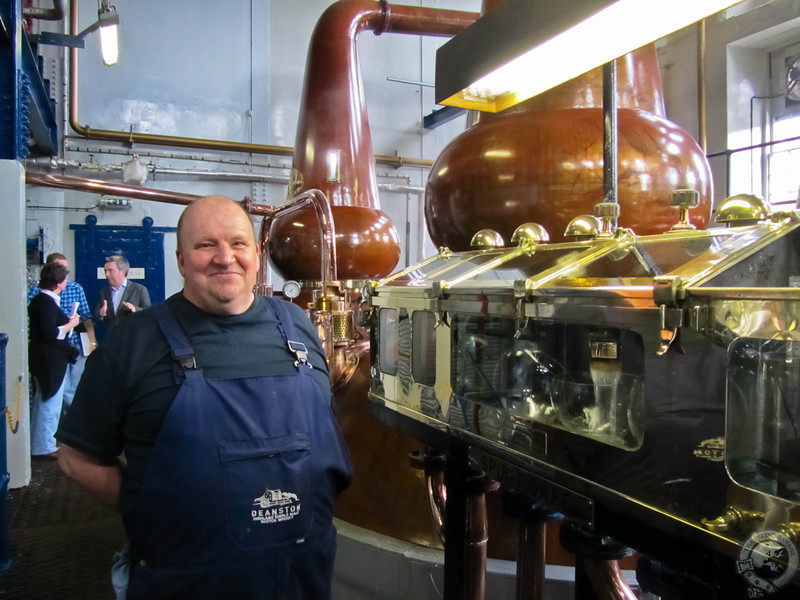
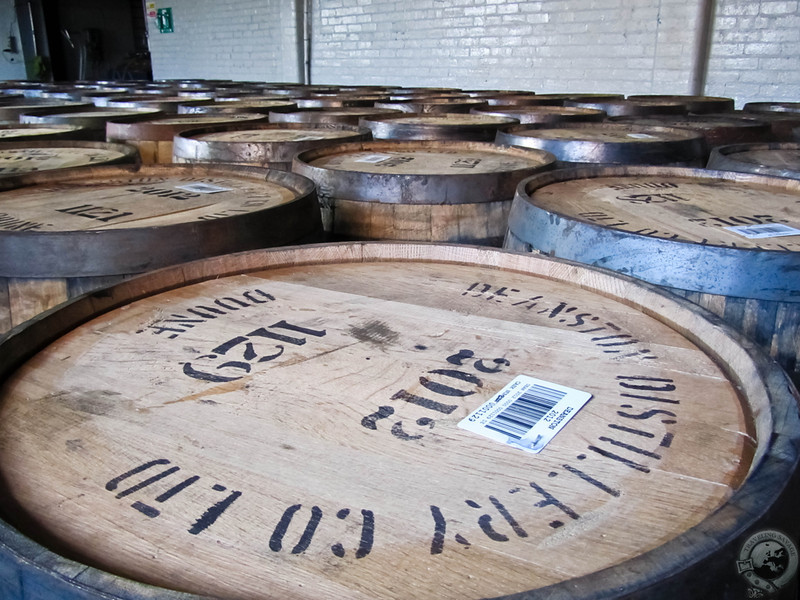
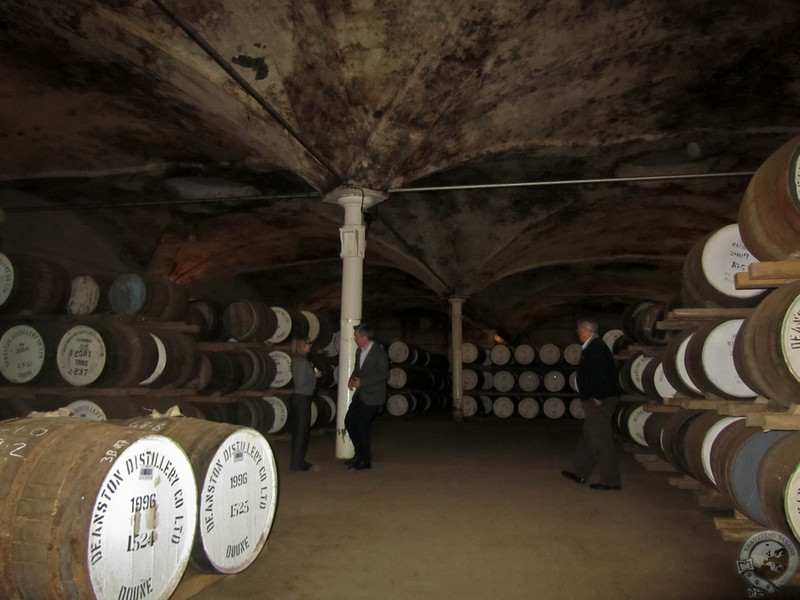
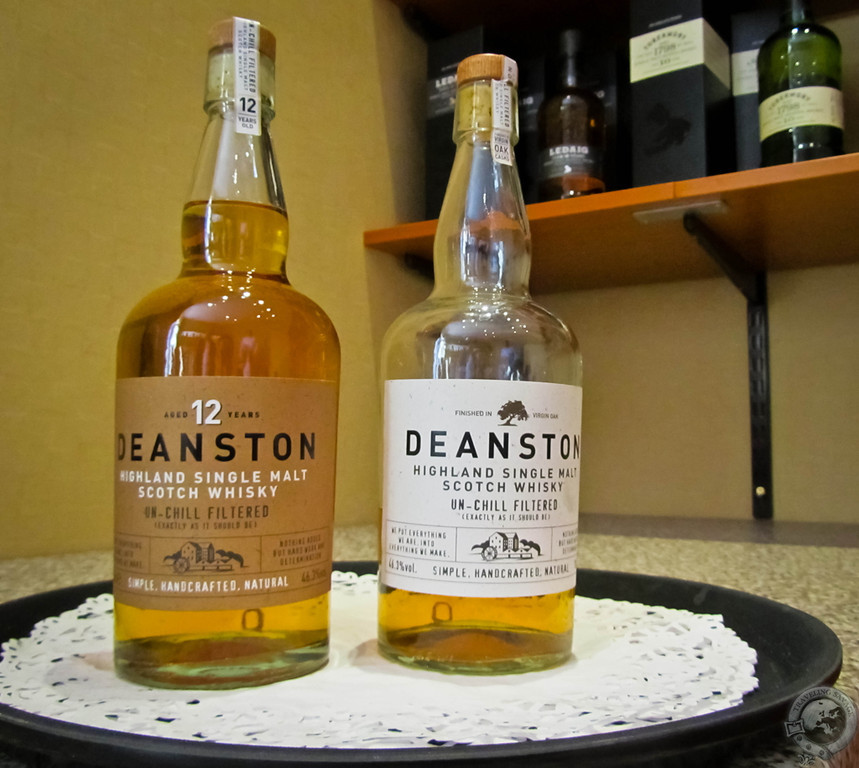
Great post, Keith, and it brings back great memories of a very pleasant and informational tour. It would have been great fun to sit down with Peter, Callum and Jim and just talk about whisky, Scotland and share some food and drink. They were some of the many really nice people we met on that trip.
I purchased a bottle of 12-year Deanston yesterday and was pleased to read this post and understand the techniques that went into the bottle. I was impressed by the flavours – a unique scotch in my collection. After reading various tasting notes, I can’t help but wonder whether there is a lot of batch variance due to the open mash tun and wild yeast.
Perhaps I’ll be able to visit the distillery one day and find out for myself!